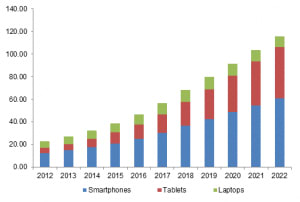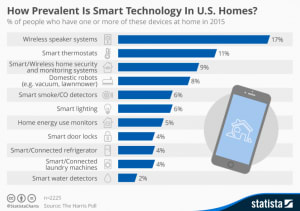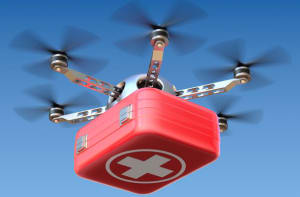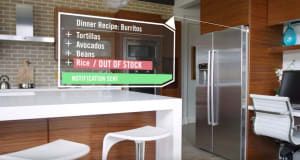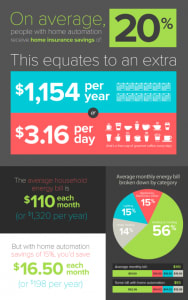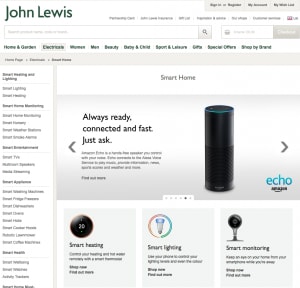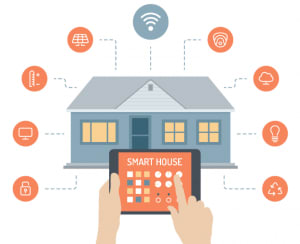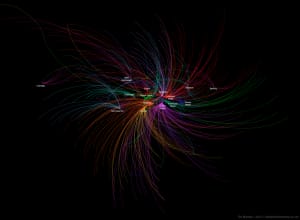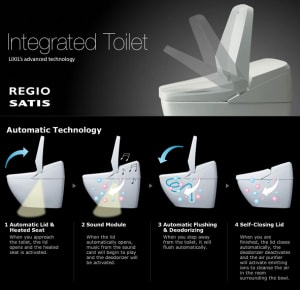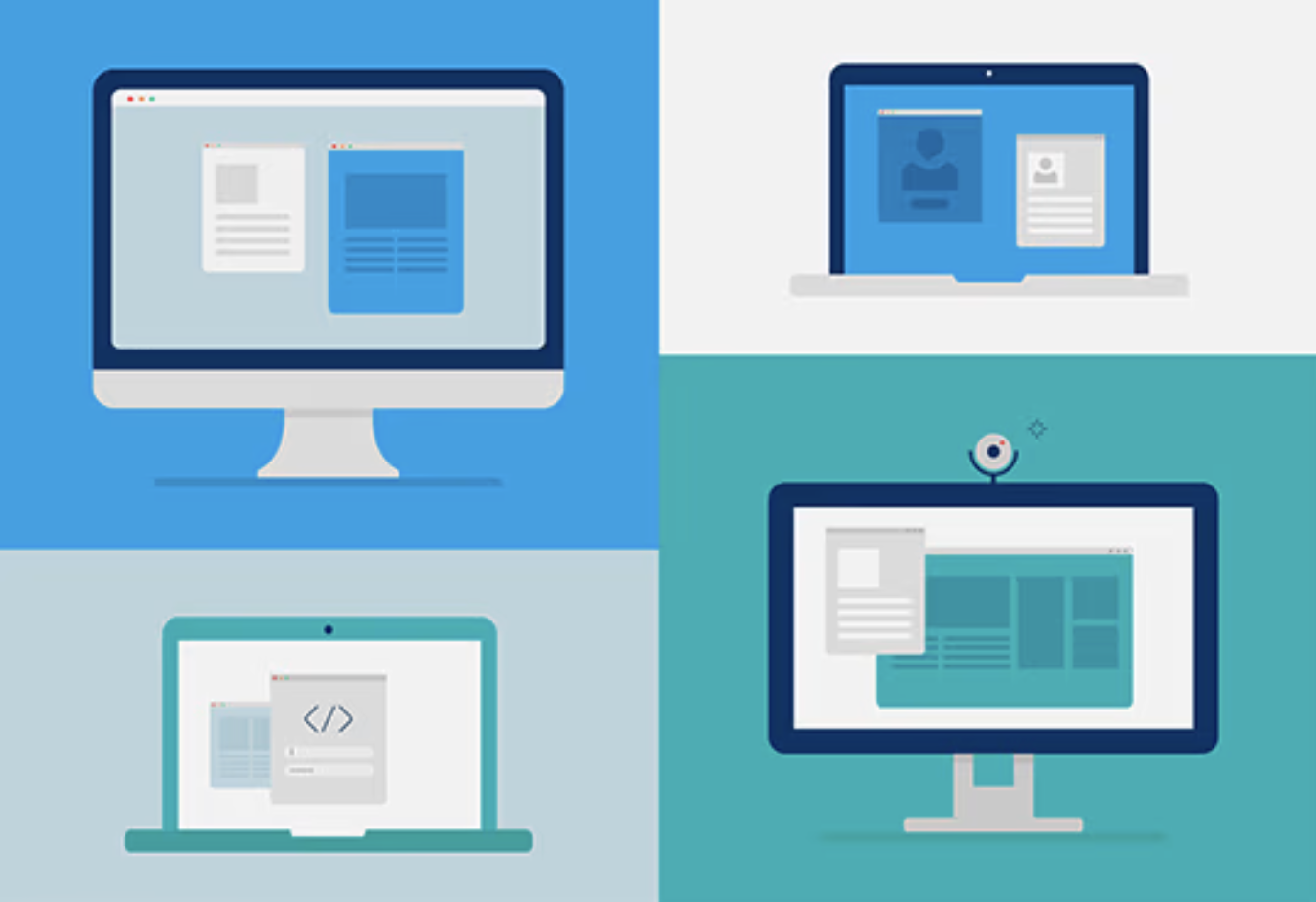
Bring your own device (BYOD) is a workplace culture that has been adopted by most industries; from healthcare to finance. Allowing, and encouraging, employees to work from their own devices not only reduces expenditure on technology, it also increases productivity by allowing employees to work from home and while travelling, on a device they are familiar with. However, when it comes to monitoring the distribution of company data, there are some challenges that accompany the benefits.
Keeping tabs
Ensuring company data remains secure, while respecting the privacy of an employee’s personal information, is the most difficult problem that IT security departments face. When personal devices are used for work, the data remains controlled by the organisation and it is important that this responsibility is carried out without breaching any data protection obligations concerning personal data stored on devices. This can be a difficult balance to achieve, especially when working in industries such as finance and healthcare that require specific data compliance.
In finance for example, MIFID II regulations state that investment firms in the EU must take reasonable steps to record communications made from equipment that has been accepted or permitted by the investment firm – this includes personal devices. These regulations also insist that firms should prevent employees from communications on privately-owned equipment which the firm is unable to record.
Monitoring communications across social channels such as Twitter and real-time communication applications such as Skype can lead to difficulties when complying with communication recording regulations. Employees are so used to communicating across a range of methods in their daily lives that to restrict them is not an option. Add to this the US lead Dodd-Frank requirement to be able to complete a case reconstruction within 72 hours of an investigation request, and the need for a solution intensifies.
Some solutions
Developing a culture that is as dedicated to security and compliance as it is to flexibility and efficiency is the answer to the new challenges of BYOD. This evolution in work should be seen as an opportunity to examine employee communication practices and put in place measures to ensure a cohesive approach.
Chart by CIO Insight showing communication inefficiencies in American hospitals
BYOD certainly encourages companies to consider a unified communications (UC) solution. UC can easily integrate existing devices into one cohesive and efficient communications strategy that can save companies time and money. As well as ensuring that the business is compliant with regulations regarding the recording of communications, there are numerous efficiency improvements that an organisation can benefit from. Research by CIO Insight found that American hospitals were wasting billions of dollars a year due to inefficient communications technologies (see chart above). Interaction between colleagues and clients is quicker, and collaboration becomes easier, allowing employees to focus on work. Employing a call recording solution like Dubber that integrates with your company’s CRM, for example, can allow transcribed calls to be viewed alongside other client information.
Software solutions that have keyword search capability, such as Dubber’s Zoe, which allow information to be gathered quickly and easily are a vital precaution against the 72 hour deadlines involved in investigations. The ability to record, transcribe, and search conversations at the touch of a button can also increase accuracy in day-to-day work and ensure that important details are not forgotten.
Flexible call recording solves the problem of collecting work data while protecting personal communications. With an services like Dubber’s Playback, the user has the option to keep a record of a call, after they have made it. Personal numbers can be blacklisted to ensure they are never recorded, while business numbers can be whitelisted so these conversations are always stored.
Graph from Global Market Insights showing growth expectations of BYOD market in USD by device
Not if, but when
With BYOD now an unavoidable reality, not having a policy on BYOD is the biggest risk to an organisation. A report by Global Market Insights anticipates growth in the North American BYOD market size over the next five years (see graph). Employees expect more flexibility in their work, and BYOD is part of these expectations.
With communications taking place across multiple applications, even on company-owned devices, it makes sense to embrace BYOD – with a considered policy that ensures security and compliance. In fast-moving sectors such as the financial industry employees are not going to ignore important calls just because they are unable to record them, so measures need to be put in place to ensure they can. Providing a UC solution that allows employees to work in the most efficient way is the key.

With the countdown to the MiFID II regulations on the financial sector within the EU continuing apace – we take a look at the APAC call recording regulations that have been put in place since the Global Financial Crisis of 2007.
Eleven members of the G20 summit, including Australia, China, Hong Kong, and Singapore, have committed to a host of regulations for their banks. The aim of these regulations is to improve transparency in the financial industries and reduce risk culture. These measures should restore the trust in investors and consumers that may have been lost in recent years.
With MiFID II mandating the recording of all mobile calls and text messages relating to financial advice and wealth management, it is unsurprising that Asia-Pacific should follow suit with its own extensive regulations.
Burden of proof
Although there is not a cohesive set of compliance guidelines for the region, the unifying theme of the regulations is financial services providers acting in the best interests of their consumers.
The Future of Financial Advice (FoFA) Act introduced by the Australian government, designed to nurture trust in customers and encourage transparency in financial service providers, states that financial advisors must act in the best interests of their clients. Best practice guidelines released by the Australian Securities & Investments Commission describe how records should be kept to show how this is being upheld. In order to comply with these guidelines, all communications with clients will need to be captured and stored securely.
The Hong Kong Monetary Authority also requires that institutions selling investment products maintain adequate records to demonstrate that they have advised their clients appropriately – this includes audio recording. Where repeated transactions are requested over the phone, these calls must be recorded to prove that customers are aware of any continued risks before continuing with their investments. Any waivers of risk disclosure should also be recorded as evidence.

Chart from Nielsen Q4 2016 Consumer Confidence Report
Similarly, the Chinese Protection of Consumer Rights and Interests Amendment places the burden of proof on service providers in the event of a dispute. Chinese and Hong Kong banks, are also required to keep records of client communications, including audio recordings, in all derivatives transactions. These must be kept readily accessible for a minimum of five years after the transaction has matured or been terminated. The Nielsen Consumer Confidence Index (see chart above) shows that Chinese consumer confidence has increased in Q4 of 2016, which shows promising signs for the new regulations.
The Monetary Authority of Singapore, in its guidelines on risk management practices, states that institutions should maintain records of telephone calls involving trades and discussions with customers on proposed transactions. Transaction information should be stored ‘in a manner that is reasonably practicable to retrieve’ until at least five years after the last date of expiry or termination of a contract. Storage for this length of time tends to be a major challenge for legacy call recording solutions, especially as financial organisations grow. The costs involved can increase dramatically with the storage requirements. With a native cloud solution, scalability is built into the service – allowing organisations to manage their data without any extra hardware.

Chart from World Economic Forum
It’s not all doom and gloom
As regulations and guidelines around financial services tighten to protect taxpayers and consumers, technology providers strive to innovate solutions to help organisations along this road. For instance we have seen solutions such as Dubber working with service providers to provide finance-focused call recording solutions to overcome these challenges.
Solutions such as Dubber’s native cloud call recording will be an instrumental service for organisations wishing to comply with these guidelines. Just like the paper trail of emails, it provides proof that specific information was supplied to a client, ensuring advice was given in their best interest. Not only is the implementation of this service quick and easy, there are numerous commercial benefits that accompany it.
Keeping customer service and user experience at the forefront of your business strategy is vital for success, and there is no reason that this shouldn’t be the case when maintaining compliance with regulations. The systems that have been put in place by financial authorities to maintain consumer interests can actually help banks to identify consumer behaviour patterns that can help them to understand their customers and improve their business.
Safe storage that is easily accessible, is something that you can expect from native cloud solutions. Without the need for any hardware, Dubber can provide long-term secure storage for your calls, which can be accessed in a flash. Solutions such as Dubber’s platform offering, which utilise third party infrastructure as a service solutions such as Amazon Web Services, experience vast benefits such as scalable storage and enhanced cloud security. Prioritising security is all part of the AWS cloud infrastructure, which is constantly evolving to protect your data.

The way people communicate is changing, and so telcos need to reevaluate how they deliver their core services to keep up with these. In a dynamic and turbulent time for communications, telcos must consider a new balance to build lasting revenue streams; they must find innovative new solutions to overcome the 4 major challenges facing telcos today whilst still providing users with key services.
To stay afloat, telcos must adapt. If they invest and develop suitable solutions that simultaneously answer consumer demand and support tech innovation, they will broaden their user base and open themselves up to new sources of revenue. If they fail to adapt, however, they will find themselves threatened by other new, innovative smaller but yet fastly growing companies. In a competitive and dynamic industry that is headed for a big shake up, what new challenges are the biggest threats to telecom longevity?
1. Competition from OTT services.
The phenomenal growth of mobile messaging apps in the last few years has become a serious threat to telco revenue. Approximately 2.5 billion people worldwide now use at least one messaging app, which is steering valuable traffic away from telco’s text services. There is already an obvious decline in the Average Revenue Per User (ARPU) of telcos, with a decrease from 34.58% in 2007 to 22.11% in 2015. If the trend continues, text messaging will die out completely and OTT service providers will continue to steal valuable revenue from telcos. Add the voice services provided on top of these messaging apps and the issue is much more significant.
2. Gearing up for the IoT
The integration of the IoT into our everyday lives is edging ever closer, and it is predicted that there will be 21 billion connected devices by 2020. To sustain these numbers, platforms that support incredibly high levels of connectivity will be needed. This places a lot of pressure on telcos to develop a converged platform that is sufficiently functional to support the full weight of the IoT. The integration of technology companies with telco services to form the IoT could also result in a hugely compressed telco infrastructure.
3. Decrease in voice revenue
The way people communicate is changing: where voice and text used to dominate the communications industry, now internet messaging and VoIP do. Smartphone traffic is moving to WiFi, increasing from a total of 59% of smartphone traffic in 2011 to 81% in 2013. As a consequence, voice traffic has decreased from 50% in 2009 to 41% in 2014, leading to a decrease in voice revenue of 2.7% by 2014. Previously voice revenue was the largest source of income for telcos, and so the decrease in voice revenue has led to an overall decline in ARPU. Telcos must find an additional source of revenue to replace voice and text – such as network level Value Added Services.
4. Developing 5G
5G is expected to become available to the public by 2020. It is expected to improve not just the speed of the spectrum, but the capacity and latency as well. Ultimately, 5G will provide a browsing experience for users with less delay and unlimited connections. The potential of 5G will also facilitate development of IoT, meaning 5G will be not just an upgrade, but a complete revolution of mobile technology. However, there are many industry sectors and companies who could profit from 5G – including technology giants such as Apple, who are investing in 5G to support their smartphones, and IoT companies in need of a platform from which they can launch their products. The involvement of other industries puts telcos under pressure to develop 5G technology before they are shut out of the process altogether. The race is on – and telcos must invest heavily if they are to produce a network with the promised capabilities of 5G.
Take the new Peugeot Instinct for instance. At this year’s Mobile World Congress, we saw glimpse of telecommunication services and device providers, partnering with car manufacturers, to produce concept products and showcasing the reach of 5G within new sectors. This is a welcome step in the right direction.

Park Associates recently released an Internet of Things (IoT) industry report suggesting that by 2025, 66% of US households would be smart homes. This got us at Dubber thinking about the future, and wondering what 2025 would look like, and just for fun, we thought we’d write a snapshot of what life might be like in 2025.
Chart from Statista
I am woken by the shrill, high notes of my alarm as they penetrate into my ear and leave no opportunity for delaying or ignoring their wake up call. I miss the time when alarms were by my bed or on my phone, and could be snoozed until I decided I wanted to get up. Since they have been integrated into our pillows they’ve become pretty hard to ignore, and unless I lift my head off the pillow it won’t stop. On the plus side, I’m never late anymore.
I drag myself from my nice, heated bed and head to the bathroom. I decide I’m still feeling pretty drowsy, so I tell the screen in the bathroom to get the coffee machine to make my morning espresso ready for when I get out and to set my shower temperature to a little hotter than usual. I select my shower music and step into the cubicle, the water automatically starting once I close the door.
One very hot shower, massage (from my new shower installation) and an espresso later, I leave my bedroom and head into the kitchen, the lights following me as I move from room to room. After my bespoke liquid breakfast, I set the hoover, mop and lawnmowers to do the rounds once I leave, and pick up my coat and bag. The screen on my fridge tells me that it’s raining outside, so I grab my umbrella too. As I’m about to leave, I get a notification on my phone alerting me that the fridge door is open, so I return to the kitchen and force it shut before leaving the house.
As I get into my car I get a notification on my phone informing me that, because the sensors detect nobody is home, the heating and lights will all be switched off. I approve the notification and ask the car to play Justin Bieber. I’m in a Throwback Thursday mood today.
As my car drives me to work my phone plays the daily headlines and weather reports through the car’s speakers and talks me through my schedule for the day. I rearrange a meeting and dictate a couple of emails and decide to pick up breakfast from my favourite cafe on my way. The cafe is pretty busy but their Amazon Go system picks my face and details up as soon as I walk through the door, and a notification on my phone asks whether I would like to change or keep my last order. I choose to keep it, pay with my phone and wait for only a minute for my order to be ready.
Annoyingly my retina scan entry isn’t working today, so I have to go to security and get an ordinary touch ID entry to let me into the office. I can’t help thinking that sometimes all this technology slows me down, but then I look at my breakfast and think how I don’t have any cleaning waiting for me at home and instantly dismiss the thought. I heard someone say the other day that the world has changed more in the last 20 years than in the previous 250 years, and I can’t help but think that must be true. Life before the tech revolution seems like another lifetime altogether. I can barely even remember what it’s like to drive, clean or place an order with a waitress. I wonder how I ever got by before my phone became my personal assistant and virtual soul-mate. I try to remember the last time I wrote anything. It was probably my mum’s birthday card 5 years ago.
An alert from my Google Contact Lens reminding me that my first meeting of the day is in 5 minutes stops my thoughts in their tracks, and I hurry to my desk. My iScreen greets me, and within seconds my phone is connected to the workspace and I am ready for the video conference.
After a busy morning of 3 meetings, I read through the email transcripts of the calls and save all notifications of the important actions I must prioritise into my calendar. An alert reminds me that my appointment with my GP is during my lunch break, so I head to the canteen to grab some lunch and am seated once more at my desk just in time to chat to the doctor. He examines my vitals through the sensors on my phone, asks me questions and informs me that he will be prescribing me some Immune Boost, which will be delivered by drone to my office within the hour.
By the end of the day the Immune Boost has done its job and I feel much more lively, so I decide to walk to my car rather than taking the shuttle to the car park. From the car I check the inside of my fridge to see if I need any chicken for the casserole tonight and order my oven to preheat to 180℃. I can’t wait to get home and spend the night in front of my TV. I wonder what recommendations it will have for me tonight – they’re always so perfectly catered to my likes, current events and even to how my day has been. I have no idea how it works but I love it.
I arrive home at 6pm to find the front lights on and waiting for me, knowing that this is the time I usually get back. My house opens the garage door, deactivates the security system and turns on the lights on sensing my car in the driveway, and I park up and head inside. After dinner, I settle down on the sofa to read through the TV’s recommendations and select a feel-good film – perfect for when you’ve been feeling unwell. I’m guessing that recommendation was based on my Immune Boost prescription earlier in the day, although I must admit the technical side of life today does completely escape my understanding.
After the film, which was as always perfectly recommended, I head to bed and put on my Thync head pad to help me relax, enjoying the gentle stimulating pulses and knowing my alarm will be set as soon as my head is detected on the pillow. I make sure everything in the house is turned off from my phone, select a dream from my UtopiApp and settle down for a good night’s sleep, looking forward to a night of sunbathing in the Maldives in my dreams.
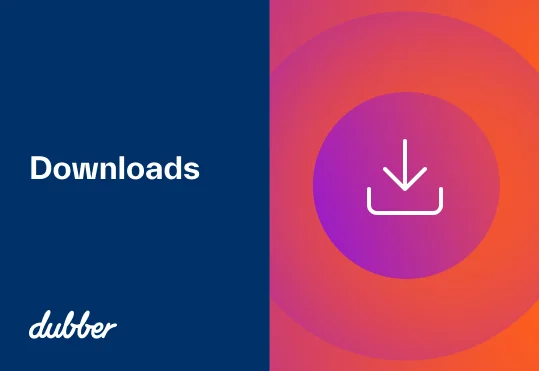
Dubber Signs Agreement with RoutIT for Cloud Call Recording

Inclarity to Launch Revolutionary Service with Dubber

Dubber Selected By PCCW Global For Cloud Call Recording

Since the first generation of iPhone was introduced almost a decade ago, numerous other tech giants have thrown their hats into the ring and attempted to compete with their own smartphones. There have been various levels of success, but none have given Apple a run for their money more than Google’s Android phones. From the day Android entered the market, a never-ending Apple vs Android debate began, with both teams gathering loyal followings. The sales and performance of the two are constantly compared, but this blog is interested in knowing which side will be strongest in the upcoming fourth industrial revolution. With the rise of the Internet of Things, 5G and smart technology, which side will adapt and win the debate once and for all?
A Decade of Competition
The true comparison between Apple and Google’s smartphones is between their operating systems iOS and Android, as this is where the competition for control of the IoT will actually take place. When it comes to sales, they vary most quarters. According to Tim Cook, 30% of iPhone buyers in the July-September 2015 quarter had switched from an Android device, and in the last quarter of 2016, iOS sales outperformed Android: winning a 6.4% rise in shares whilst Android experienced a 5.1% decline. Despite this, Android still holds the majority of the market.
The debate of iOS versus Android remains unsolved when it comes to smartphones, as some users are firmly in Android’s corner and others back iOS. Whilst each camp constantly and fervently argues their side, those of us on the fence have decided that the debate is currently futile. At this point, both iOS and Android are mature and competent operating systems that realistically are more similar than different. In our eyes, it could be that the future, and their response to it, will finally end the debate.
The next big trend in consumer technology is set to be home automation, as smart technology is brought into the home. Possible new products include doorbells that connect to smartphones and show who is at the door, coffee machines that brew coffee based on traffic and self-ordering fridges. These devices will all be connected to smartphones, enabling homeowners to control their home from their phone.
To make the development of these smart homes a possibility, a strong platform that facilitates the connection of many devices to a unified service must first be built. The role of smartphones in smart technology and the Internet of Things appoints Apple and Android as the major players in the battle to develop the first successful IoT platform.
An example of an everyday use of a Smart Home. Watch full video here.
Apple’s IoT Platform
Apple’s current contribution to the IoT market is HomeKit, a framework for connecting smart devices in the home. The platform uses HomeKit Accessory Protocol (HAP), and already has the advantage of many HomeKit-enabled devices being available in the market. These devices may also be able to connect to Apple Watches and Apple TV, which will rejuvenate both products and give Apple Watch owners an exciting new use for their smartwatch. The downside of HomeKit is that it is a closed-source project. Every IoT device that hopes to connect to it will need to be Made For iOS (MFi), which will limit the connectivity of the IoT.
HomeKit will appeal to those already favouring Apple and iOS, and its attractiveness as the first IoT platform will depend on the number of devices which Apple successfully can bring to the smart market using MFi. Apple will need to identify the greatest consumer demand for smart devices, which at this early stage of the IoT and smart technology is still relatively unknown.
Google’s IoT Platform
Google are already on their second attempt at developing an IoT platform: following the failure of Brillo, they have rebranded and released Android Things. Google’s entry into the IoT race is a platform that enables Android developers to create new smart devices by using Google’s existing Android APIs, and many are excited by the platform’s compatibility to Android devices and its brand new OS.
Android Things enables cross-platform APIs, which will encourage innovation for the IoT and home automation across a broader range of developers – by offering up a platform for its development. Android Things is therefore less limiting that HomeKit, and offers greater connectivity. Additionally, Google’s platform has a wider range of suitable products under the Android family than Apple does. However, Android Things is also limited by its reliance on the loyalty of Android consumers to establish itself as the key IoT platform on the market.
So who will Come out on Top?
Google and Apple are not just battling each other – they also face competition from Amazon. With their recent release of Amazon Echo, an intelligent voice control assistant for the home, they have also entered the IoT race. Voice control is already popular (it is currently used by 1 in 5 Americans to perform Google searches) and is predicted to cause a larger revolution than touch screen technology. It is therefore certain to play a key role in the IoT and smart homes, validating Amazon as a key player in the IoT race. Having already conquered their industries, all three companies are in the IoT race to gain a new physical space (the home) for which to sell their products, and to broaden their demographics with smart home technology that will apply to a larger audience. For the winning company, the value will be immeasurable.
Apple, Google and Amazon’s platforms and the IoT itself are still very much in their infancy, and so it is hard to predict what will happen in the future. After all, when the iPhone was first released it received largely negative reviews. Steve Ballmer, then CEO of Microsoft, even said that the iPhone was too niche: “There is no chance that the iPhone is going to get any significant market share. None.” And yet at the end of 2016, the iPhone had a market share of 11.5%, whilst the Windows phone had 0.4%.
The bottom line is that brand loyalty does not choose the winner – just look at what happened to Blackberry and Nokia in the smartphone market. Customers will ultimately choose the company that gives them what they demand, and delivering this in a seamless fashion is what will distinguish the winner. It is predicted that the victor in the IoT race will be either Apple or Google, as both have the advantage of brand recognition and a pre-existing ecosystem of smart devices. Currently, Google’s Android Things stands out as the more promising platform, and seems to be solidly in the lead – but as Apple proved in 2007, tech wars are highly unpredictable.

With John Lewis, a large UK based retailer, recently launching a Smart Home department and Amazon, Google and Apple all developing their own Internet of Things (IoT) platforms and devices, the IoT is definitely on the rise – and looks set to become the new standard of living by 2020.
John Lewis decided to launch their Smart Home department following a yearly increase of 1,600% in searches for smart home products by their customers. The question now appears to be not if smart homes will become mainstream but how, and who will be the first to launch a successful platform. It is even predicted that smart homes will become as commonly adopted as smartphones. As the era of smart technology approaches, life in the near-future is set to become radically different to the lives we are used to leading now.
If you’ve ever wished you could check whether your fridge is out of milk on the journey home, instruct your coffee machine to make your morning coffee without getting out of bed, preheat the oven before you get home or automatically coordinate the lighting in your home with the time of day and activity levels, then those dreams may not be as far off as you think. The IoT is already making its way into everyday life, and soon these seemingly impossible tasks will become common practice.
Image from Net Things
But what you may not know is that the IoT is already integrated to a certain extent in our everyday lives. There is a large collection of smart IoT devices that are available to buy or that even are already integrated into our everyday lives. With this in mind, we have compiled a list of our top 5 IoT devices that you probably didn’t realise you are already using:
- Sat navs: Now this depends on the model, but more recent ones have been integrated into the IoT, and can now download traffic data and automatically update their planned routes to avoid heavy traffic.
- Wearable devices: Wearable health monitors, for example, Fitbits, are a growing craze. The devices record your activity levels, exercise, food, weight and sleep, and gather your overall health data to help improve a user’s health. They are considered an IoT device because they rely on connectivity and download the collected data to smartphones or computers.
- Smart thermostats: Internet-enabled heating systems are perhaps the most common smart home device. They connect to smartphones and enable users to control their home’s heating from their phone. Nest is the most famous example and is available as a package with smart smoke and carbon monoxide alarms.
- Amazon Dash buttons: Amazon is releasing increasing numbers of IoT devices, such as Amazon Echo – which marks the first IoT personal assistant device, and Amazon Dash buttons – which provide an IoT consumer goods ordering service. They are available for all common household products, and enable users to order a top-up as soon as they run out, at the mere press of a button!
- Oyster cards: Launched in 2003, Oyster cards were actually one of the first commercial devices to use the IoT. The cards collect usage data of where, when and how often the user travels, which is then analysed and used to optimise the underground for users. This is probably the most used IoT device in UK.
Map of daily London commuter journies – by Dr Ed Manley of UCL
Just for fun, we’ve also made a list of our top 5 crazy IoT devices that you’ll find it hard to believe exist:
Top 5 Examples of Crazy IoT Devices that you won’t Believe Exist:
- Smart bedding: Heat-adjustable mattresses that can be programmed to reach different temperatures on different sides of the bed, settling the heating/window row once and for all. They can also be set to a timer and to track sleep phases, heart rates and breathing rates.
- Smart garbage bin: Quite simply, they monitor your rubbish and automatically compile grocery lists.
- Smart nappies: Who would’ve thought that nappies can be smart? Connectable nappies that send SMS reports when they detect moisture are now available.
- Smart shoes: Google and WeSC have developed a shoe that connects to social media and provides exercise motivation by literally talking to the wearer if they have been still for too long.
And the winner of the most crazily unbelievable IoT device is…
- Smart toilet seats: Yep, they’re an actual thing. Developed in Japan, smart toilet seats offer an automatic raising and lowering function, heating and automatic flushing, which can all be controlled through a dedicated smartphone app. Users can also keep a diary of toilet use and (for some reason) play music through built-in speakers.
The IoT is growing fast, and is predicted to have 20.8 billion connected devices by 2020. The rate at which the IoT is growing certainly provides an explanation to the wide range of smart technology that are already available or under development, and the at-times crazy sounding devices. The benefits of the IoT are almost limitless, and smart homes in particular have the potential to significantly reduce the costs of owning a house. There are downsides too though, such as privacy concerns, this man who spent 11 hours attempting to make a cup of tea with his WiFi kettle, and we can’t help but wonder how much demand there really is for smart toilet seats… The question is, will the substantial savings on time, energy and money be worth the privacy concern of sharing very detailed data of ourselves and our everyday life with IoT and telco companies? In other words – will the ends justify the means?

As we approach the Fourth Industrial Revolution, traditional communications solutions are on the decline whilst internet-driven communications solutions become increasingly popular. This period of drastic change threatens the survival of the Telecoms industry, as substantial declines in user spending on voice and text services have caused a decline in telco revenue – which can be monitored through Average Revenue Per User (ARPU). To stay afloat, telcos must adapt to the changing times and source other revenue streams to replace what is lost in the continuing revolution of communications. Our infographic demonstrates why telco revenue is decreasing and suggests how telcos can replace it to raise their ARPU once more:



